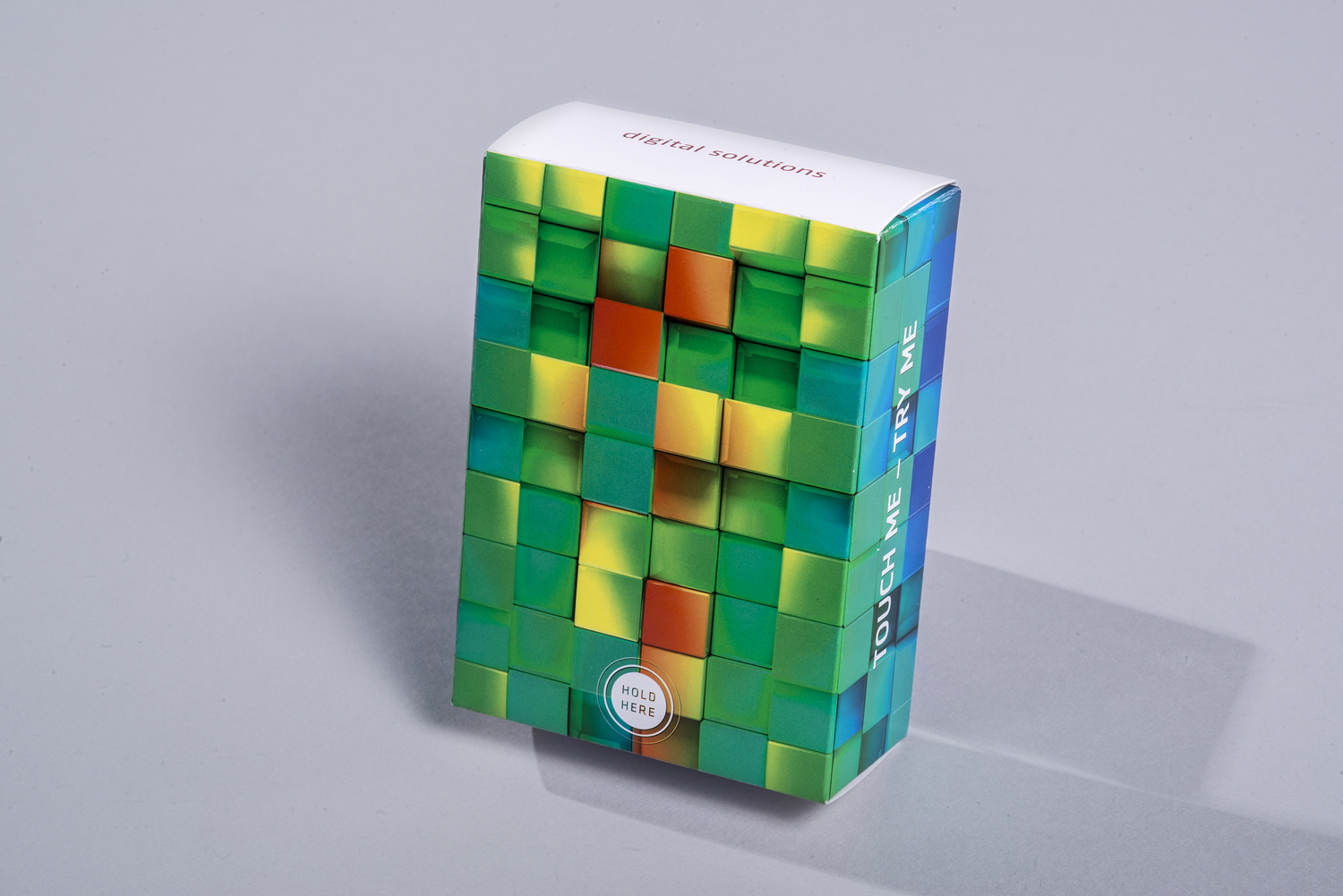
The touch code is an invisible code and thus allows freedom for graphic designers and product designers. The application of the code is generally available on all printable materials, such as cardboard, paper, labels, film and plastic. Examples include products such as folding cartons, vial cards, package inserts, etc. The touch code need not be scanned or photographed, but can just be read by simply placing it on a smartphone or tablet with multi-touch screen and the appropriate app. Digital content can be links, downloads, product information, ingredients, recipes, contests, etc.. The touch code only acts as a key; the digital contents are completely optional. The electronic communication in the printing process, the non-visible code, and the resulting connection to the digital and "printed" world are remarkable.






